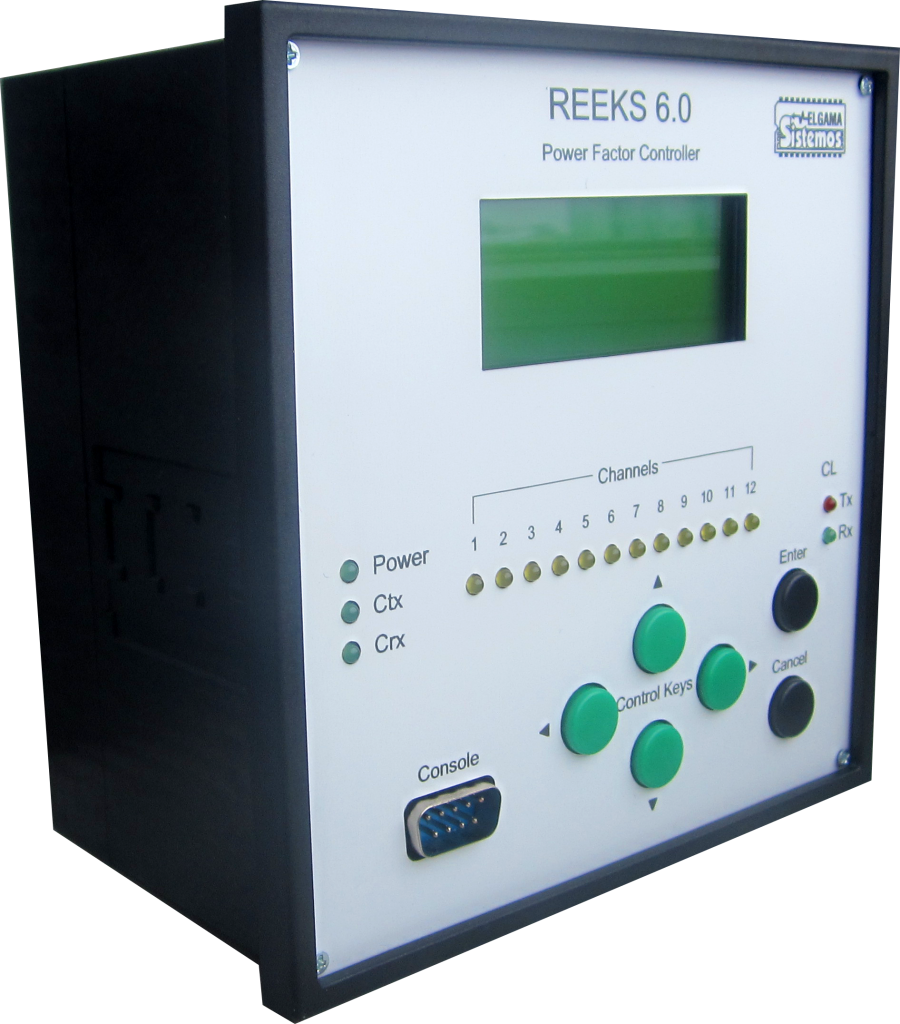Electric energy consists of 2 components - active energy and reactive energy. Active energy is the type of energy that is doing active work - devices consume this energy to work or it is converted to different type of energy, for example mechanical. Reactive energy is not doing active work. We will not dive into the details, but reactive energy is not a useful energy and companies should try to minimize it as much as possible. In some countries there are even fines for generation and consumption of reactive energy. So reactive energy doesn't do active work. It just increases the total amount of energy needed for device operation. The ratio of reactive energy to apparent energy is called power factor. The power factor describes how effective energy consumption is. The lower the power factor, the less is the efficiency. As a result, with low power factor electrical equipment is not operating at rated efficiency. Since reactive energy costs money and makes equipment not operate at rated efficiency, it is best to reduce it as much as possible. There are special devices, which reduce the effect of reactive energy. They are called reactive energy or reactive power compensation controllers. These devices measure the power factor of electric lines and connect capacitor banks to the network according to the measurement result. One of those devices is REEKS. Other reactive energy compensation controllers use current measurement transformers to measure the power factor in one phase in 3-phase network. Then they just assume that other 2 phases have identical results. This is not always true and therefore these controllers not always provide best compensation. REEKS however does not measure power factor. Instead it reads reactive power values directly from the smart meter. Thus REEKS monitors the reactive power in all 3 phases. This makes REEKS' compensation algorithm more accurate. REEKS has 12 compensation steps. Each step has a capacitor bank assigned to it. To compensate reactive power as accurately as possible REEKS turns these banks on to match the reactive power in the network as closely as possible. REEKS also has 2 logical blocks. This means REEKS can read data from up to 2 smart electricity meters and compensate the reactive power in up to 2 power lines. This is especially useful, as most companies have 2 power lines and one device can service both. The controller operates with any smart meter, which has DLMS/COSEM communication protocol. Also REEKS can control the capacitor banks of any manufacturer. We can offer a single controller or a complete reactive power compensation enclosure. To learn more you can access the user manual here or via link below. Also you can send us an inquire via email sales@navitus.lt
Back
REEKS
Reactive power compensation controller REEKS 6.0
Technical details
Power supply, AC
230 V, 50 Hz
Consumed power
< 25 W
Control circuit voltage
250 V
Control circuit current
6 A
Control circuit maximum power
30 W
Maximum number of control circuits (battery stages)
12
20 mA current loop communication interface for meter connection
Up to 2 meters, data transfer speed 1200 ... 19200 baud
20 mA current loop communication interface for system expansion
Data transfer speed 1200 ... 19200 baud
Minimum compensation period
10 s
Maximum number of grouped logical blocks
2
Operating temperature
-15 ... +45 ⁰C
Dimensions
144x144x102 mm
Download





